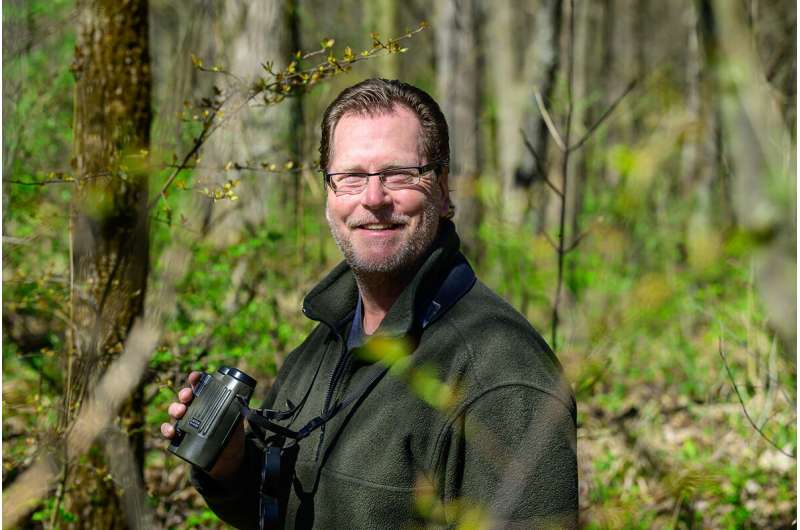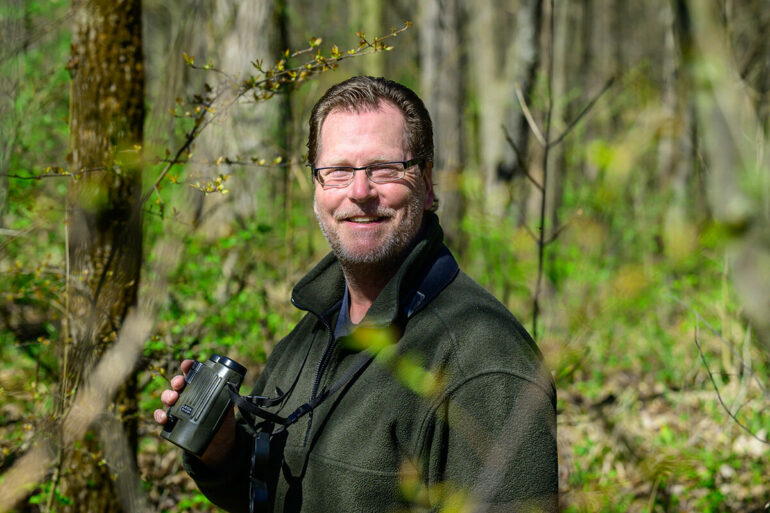A new study reported in the Proceedings of the National Academy of Sciences has assessed changes in the reproductive output of 104 bird species around the world between 1970 and 2019. The study reveals that a warming climate appears to have more worrisome effects on larger birds and migratory birds than on smaller, sedentary species.
Study co-author Jeffrey Hoover, an avian ecologist at the Illinois Natural History Survey, describes the findings in an interview with University of Illinois Urbana-Champaign life sciences editor Diana Yates.
What is unique about the study?
This study explored potential effects of global climate change—in particular, warming—on offspring production for over 100 species from more than 200 bird populations across all continents. We looked at data for each of these bird populations over 15 to 49 breeding seasons to consider whether changes in local temperatures and precipitation were associated with changes in the average number of offspring produced per female per year.
Beyond effects of a warming climate on individual species’ reproductive output, the study also considered whether climate change may affect offspring production by interacting with other attributes of the birds. Such traits include body mass, migration status, habitat needs, human impacts to local landscapes, the protection/conservation status of sites and whether the birds can produce two broods in a single breeding season. The temporal and spatial scales of this work and the number of species and populations studied were monumental.
What were the main findings?
Across the 201 populations of wild birds we looked at, offspring production generally declined in recent decades. However, there is a lot of variability among populations and species. Increasing local temperatures during the chick-rearing part of the breeding season tended to decrease offspring production in most migratory birds but increased the number of young produced in many small birds and in sedentary birds, which don’t migrate.
Warming temperatures also were associated with less offspring production among relatively large birds. These changes were not necessarily caused directly by climate change but by the effects of climate change on the life histories and ecological traits of species that influence clutch size and rates of nesting failure over time.

Avian ecologist Jeff Hoover and his colleagues explored the potential effects of global warming on bird reproductive output across the world. © Fred Zwicky
What are some examples of species with increasing or decreasing reproductive output over time?
Species with the largest decreases in offspring production included Montagu’s harriers and white storks, both of which are large, migratory birds; bearded vultures, which are large and non-migratory; roseate terns, which are moderate sized, migratory birds; common house martins, which are small and migratory; and red-winged fairywrens, which are small, non-migratory and endemic to Australia.
Species with increased offspring production included the Bulwer’s petrel, a medium-sized migratory bird, and the Eurasian sparrowhawk, a small migratory raptor; along with Eurasian wrynecks, collared flycatchers and prothonotary warblers, all of which are small and migratory.
Some species, like the barn swallow, had increasing numbers of offspring in one locale but declines elsewhere. This shows that even though the planet is warming overall, the effects of global warming on local weather and temperatures can vary considerably across a species’s breeding range.
Does this mean that large-bodied and migratory species are most at risk?
Large-bodied species seemed particularly vulnerable to decreases in offspring production in the past five decades. Climate change-related warming likely exacerbated the problem for sedentary species weighing more than 1.0 kilogram and migratory species weighing more than 50 grams. Larger species may be less able to adapt to a changing climate because they tend to live a slower pace of life. It takes them longer to mature and produce offspring and they tend to have smaller clutch sizes.
For migratory species, a warming climate could create mismatches between peak food resource availability and when demand for that food is highest—for example, when adults are feeding chicks and fledglings. Migratory species also could experience effects of climate change at the distant places where they overwinter or in habitats they use while migrating.
How are the species you studied adapting to climate change?
We have been studying prothonotary warblers in southern Illinois since 1994. These warblers are small and migratory and breed in forested wetlands and swamps. Our study population experienced increasing offspring production over time, producing more offspring per female when local temperatures were warmer.
This increase in reproductive output in reproductive output in warmer years occurred because the females started laying eggs earlier in the season, increasing their chances of producing two broods of chicks in a single breeding season. These warblers breed in an insect-rich habitat and feed on insects. It seems that at least so far, the increase in local temperatures has not resulted in a mismatch between peak insect availability and peak demand.
Did anything surprise you about the findings?
The principal researchers deserve so much credit for putting together this massive meta-analysis. It really highlights the importance of conducting long-term, detailed demographic studies of wild populations of organisms. The findings illustrate the complexity of nature. While some species may experience direct effects of global warming, it is important to recognize that many of the perils facing species are the result of complex interactions between climate change and the ecological, life history and behavioral traits of the species being considered.
More information:
Halupka, Lucyna, The effect of climate change on avian offspring production: A global meta-analysis, Proceedings of the National Academy of Sciences (2023). DOI: 10.1073/pnas.2208389120
Provided by
University of Illinois at Urbana-Champaign
Citation:
New 50-year study offers insight into effects of climate on bird reproduction (2023, May 1)



